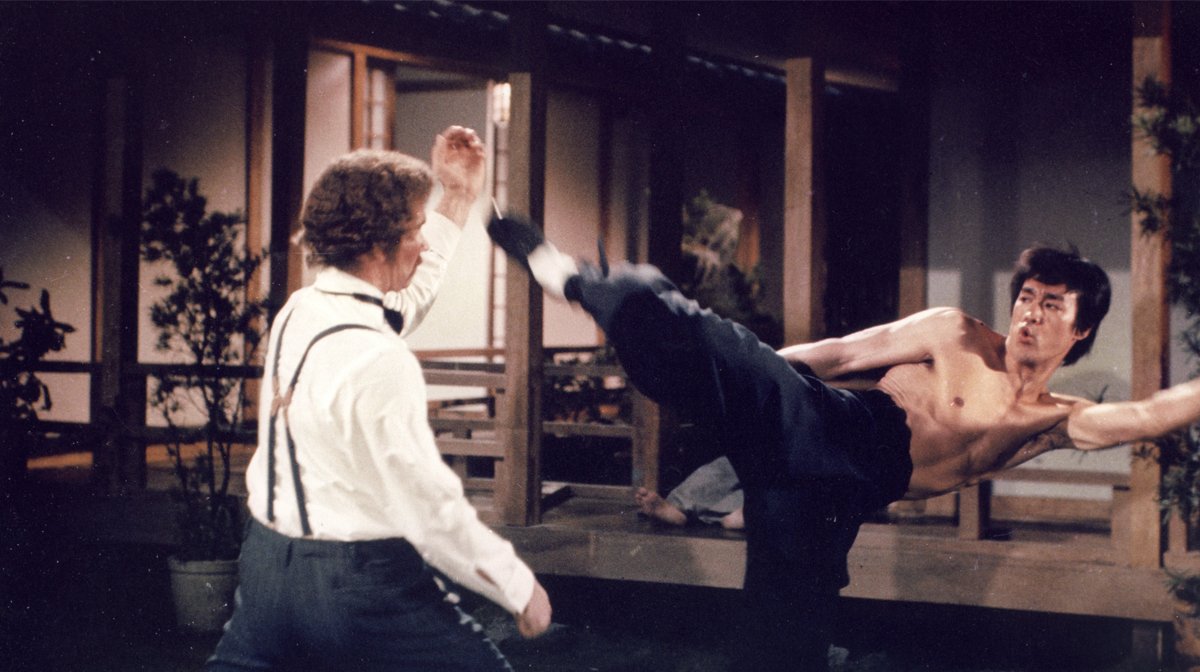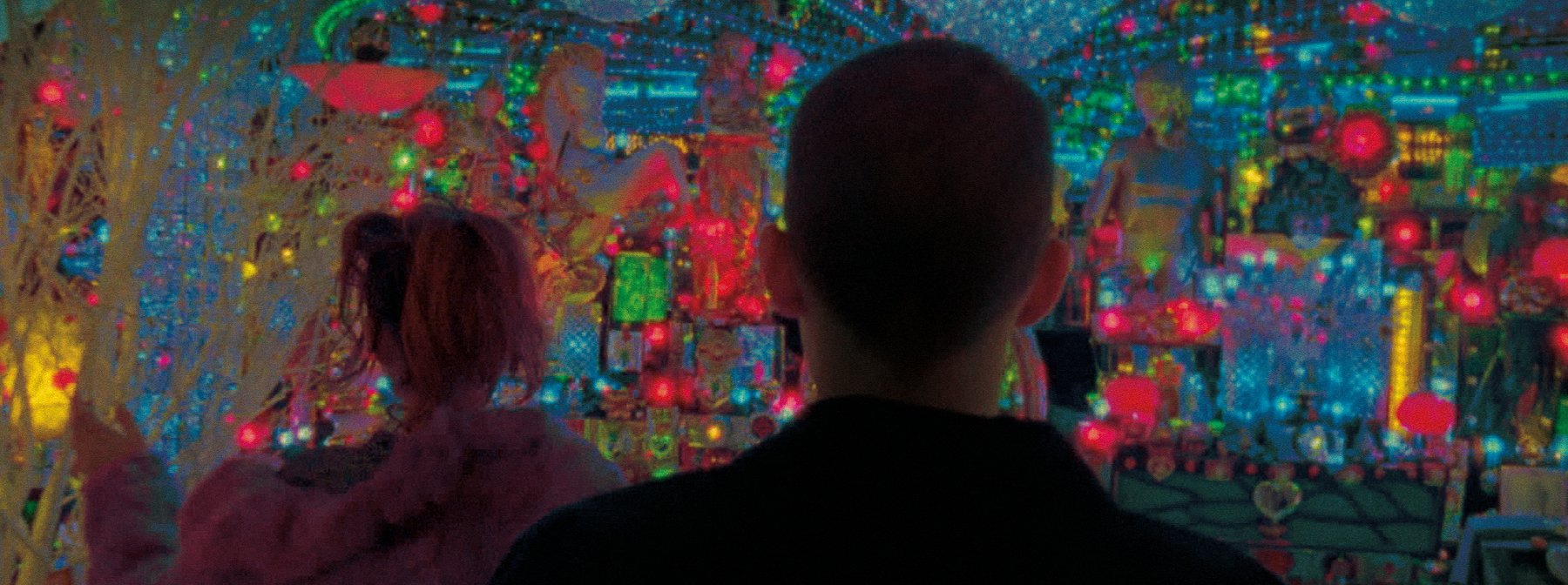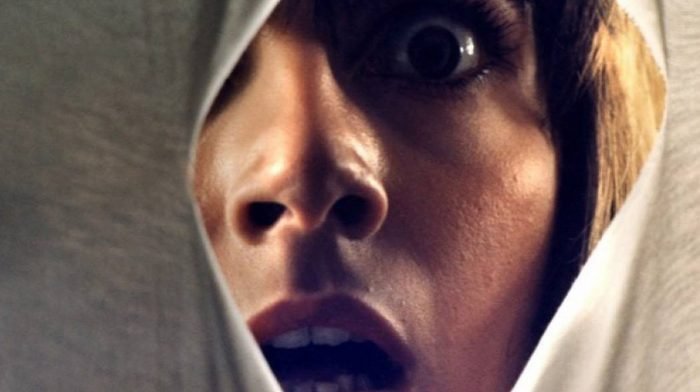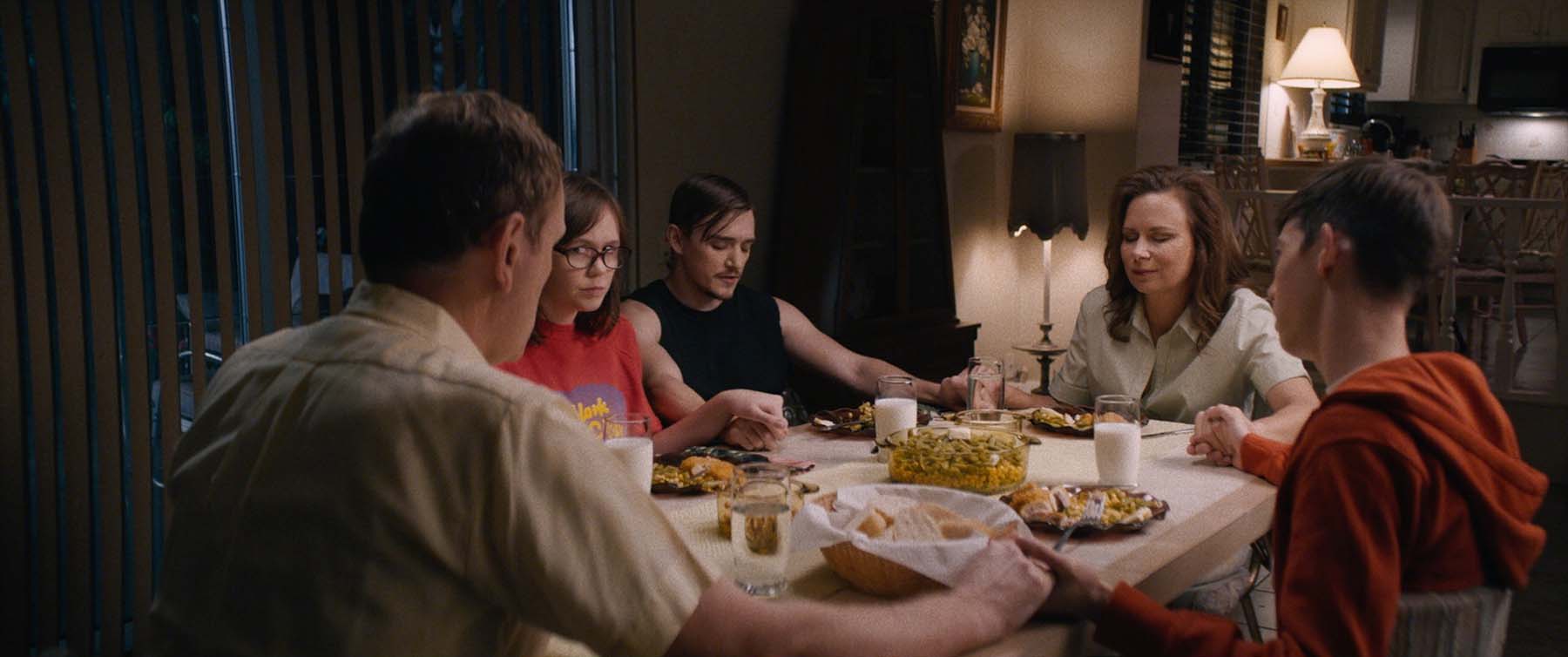Another dreary day of spittle as rain and smudged gray skies go by, yet today is not quite like the others. The weather is still the pits and you’re still sure that one of your neighbors is a terrorist-in-the-making, but there’s a slice of better life waiting in the mailbox. Huzzah, it’s a postcard from your friendly uncle Herschell. Okay, he’s not really your uncle, but you sure as sugar wish he was! This small but mighty piece of mail has “Greetings From Miami” emblazoned on the back. Miami is printed in the biggest letters, with the insides of each letter displaying a little mural-peek into the local scenery. There’s a leggy lovely with long blonde hair and a pink bikini, tanning by the pool. Next to her is a beachside portrait of two lovers kissing night side. After that, the mural gets a little strange, as there are two law enforcement officers looking tense in a beige room, a pagan feminine idol in a gold spray-painted mannequin pose, and most curious of all, the frenzied visage of a man with wild brown eyes and even wilder dark eyebrows. The front of the card, in handwriting that is impeccable for being clearly written with keen importance, simply asks, “Have you ever had AN EGYPTIAN FEAST???”
Man, Miami must be one wild place!
A vital part of horror cinema was forever altered by how violence could be depicted back in 1963 with the release of Herschell Gordon Lewis, also referred to as H.G. Lewis’ Blood Feast. While smatterings of cinematic gruesomeness certainly existed beforehand, such as the eyeball scene in Dwaine Esper’s notorious 1934 film Maniac, no Western filmmaker had gone full tilt boogie Grand Guignol quite like Lewis. It might have been far from his first feature film (that honor goes to 1961’s nudie cutie, Living Venus), but it was the one that firmly established him as the “Godfather of Gore.”
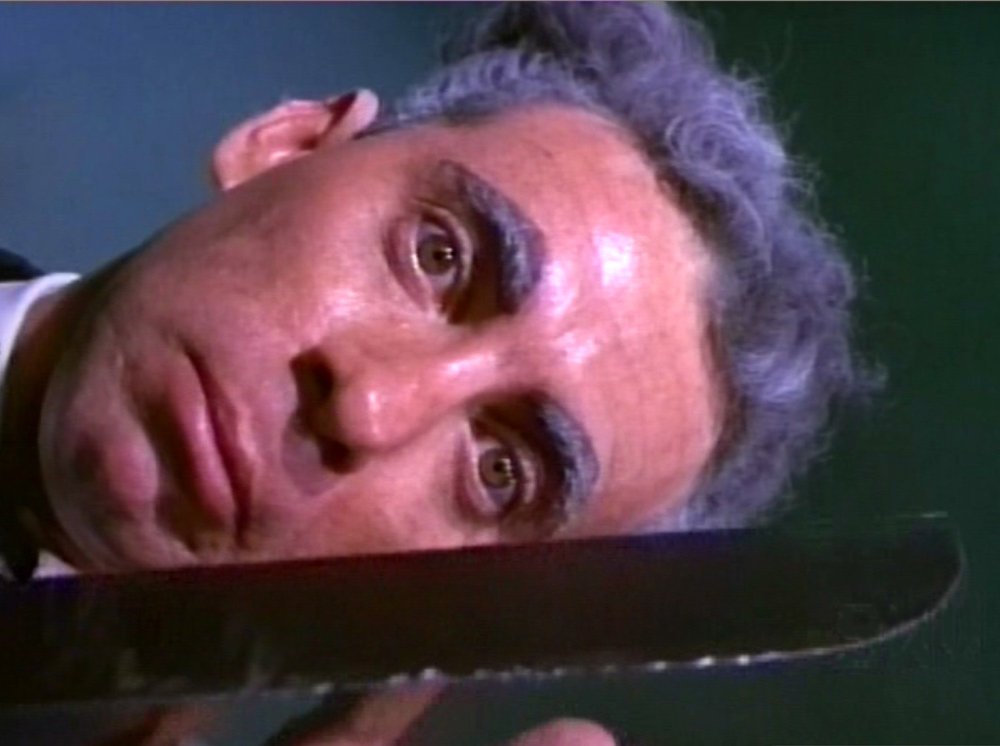
Would you let this man cater your birthday party? Fuad Ramses (Mal Arnold) is ready to serve up dinner.
Blood Feast might have been the first film to so openly, almost lovingly, gaze at rivers and wee tributaries of spilled stage blood and copious awful-offal, but that is not what makes it such a fun and strange experience of a film all these years later. Okay, that’s a bit of a lie, since the gore is truly something else.
This mix of adult doll parts, animal viscera, and fake blood may not fool a coked-up Charlie Sheen enough to contact the FBI Guinea Pig-style, but not being ultra-realistic is not necessarily a bad thing. If anything, when ultra-violence gets uber-surreal, then something stronger than autopsy thrills hit. It is gross and one can only imagine the various charnelesque odors that developed on the Floridian set, but the way Lewis approaches color is glorious. The sanguine colors here are bright primary red and often spilled near sky-blue bathrooms, sandy beaches, peachy-skinned victims, and emerald green fauna. Every murder scene in Blood Feast looks like a candy-colored pin-up from the mind of a homicidal Bunny Yeager and thank goddess Ishtar for that. Such rampant mutilation does not have the right to be so striking, even pretty, but here was Herschell, giving grisly aesthetic glamour a few years before the Italian maestros would corner such a dark-eyed and eternally-compelling market. Backing it with a simple yet iconic soundtrack that brings the heavy dread and pseudo-exotica befitting such grue-happy, phony-baloney occult shenanigans. The composer? None other than H.G. Lewis himself! For a director who was a die-hard advertising guru that would have scoffed at seriously being called an auteur, much less an artist, Herschell, along with his producer-in-crime David Friedman (who truly nets his own article at a future time), could and did bring it.
Going back to our beloved lady of the dark, the blood cult goddess herself, Ishtar, the incorporation of this ancient religious rite as the key motivation for her most loyal and possibly lone modern-day follower, Fuad Ramses (Mal Arnold), is another aspect that makes Blood Feast such a treat. This is a film that could have only come out when it did, because everything spinning around Ishtar has such an early 1960s tiki-lounge aesthetic that is all but a distant thing of the past nowadays in general, much less in horror. All of the comely lasses, cleavage, gold paint, and liberally creative approach to ancient pagan culture and history would not be out of place on any Les Baxter, Arthur Lyman, or Martin Denny album cover. (Well, minus the severed tongues, hearts, scalps, and legs, naturally.) Even Lewis’ other gore films would go on a different path and atmosphere, truly making Blood Feast extra unique.
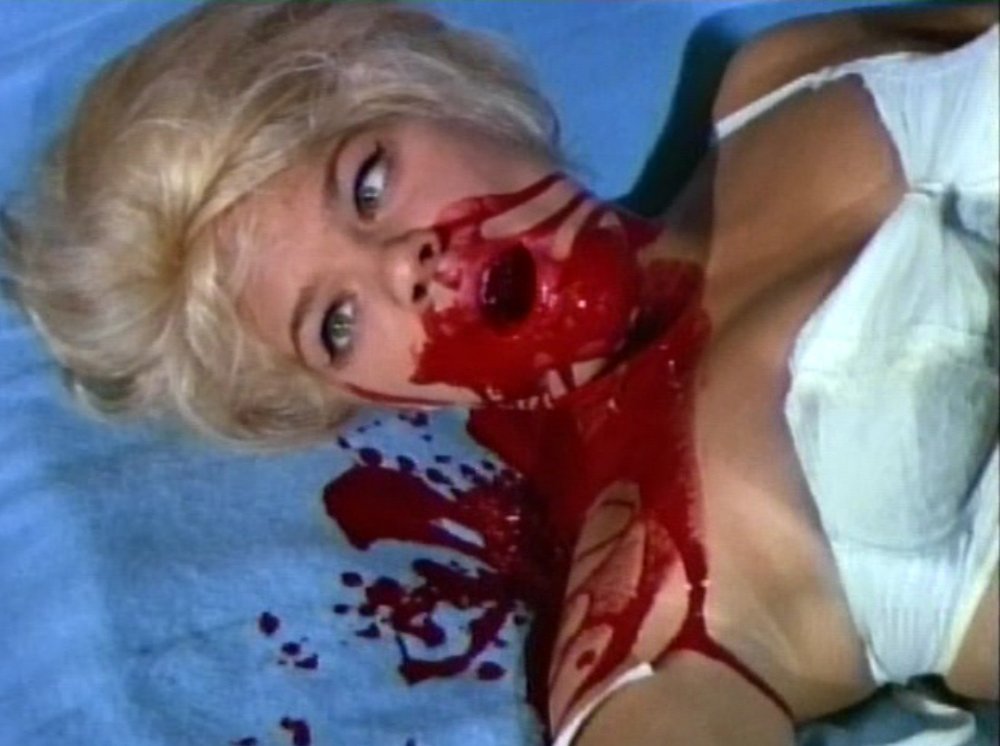
A victim is lost for words in Blood Feast (1963)
Speaking of uniqueness, while he rarely gets such credit, Mal Arnold, as Fuad Ramses, should be heralded as one of the more standout slasher movie villains. The strangely mannered way of speaking, the manic but never quite broad body language, the bulging eyes, the fact that he is clearly in his 30s but due to the fake gray streaks he is constantly described as “…an old man…,” and those otherworldly eyebrows all inhabit a killer rarely seen before or since. Both Blood Feast and Mal’s performance have been critically panned for decades, but what do a bunch of stuffy critics know? If one cannot appreciate the simply decadent pleasure of a local business owner, single-handedly running his Exotic Catering shop, which carries Turkish delight and Irish oatmeal if you’re curious, who is also the sole member of a dusty cult that practices “weird religious rites,” then do not attempt to save them for they are lost.
The way that Arnold leans his upper torso over the counter to intone more than ask Mrs. Fremont (Lyn Bolton) if she’s “…ever had…an EGYPTIAN FEAST?” is like a red flag at a dimestore carnival. Creepy but the gumption is delightful! The other characters around Mal are fine, with some ranging from the capable (William Kerwin as the film’s hero, Detective Pete) to the most Natalie Schafer-esque (Bolton) to the technically-bad but winsome (Connie Mason), and then there’s Tony
(Gene Courtier). Oh, Tony. This mook takes his steady girlfriend to the beach at night for a little make-out session. Despite her protests of being uncomfortable, especially with there being a serial killer on the loose, he all but whines with the capper of, “Prove that you love me.”
Tony is the worst.
This ties to yet another splendid feature of Blood Feast, which is an important lesson of love. The film is telling you that if your partner dismisses you while uttering the phrase, “Prove that you love me,” you’re in immediate danger of being de-brained by a limping independent business owner with Joan Crawford-brows. It does seem a bit extreme, but the core point is rock solid.
Both film and the world at large lost Herschell Gordon Lewis back in 2016 but his filmography, whether you want to call it weird, schlock, psychotronic, cult, trash, bad taste, disgusting, whimsical, low budget, no budget, delightful, or exploitation, it is singularly his and his alone. There is so much blandness and obscene-lack of spirit out there, which is all the more reason to adore Herschell and bask in the vivid prima-color high weirdness of Blood Feast.
Uncle Herschell is truly the greatest


